Light Requirements for Houseplants: What You Need to Know
Discovering light requirements for houseplants is vital to promoting plant health. If you are unsure about your plant’s lighting needs, our guide will help you choose the right spot for your houseplant indoors. Different plants have varying light requirements from full sun to shaded conditions. Read on to discover more about houseplant lighting needs.
Light requirements for houseplants: Types of houseplant light intensities
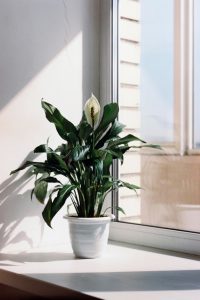
Houseplants have different lighting needs. Some need plenty of light to thrive while others prefer medium or low-light conditions. Learning your plant’s lighting needs is the key to providing the right type of lighting. Below are the different types of light intensities.
Full sun
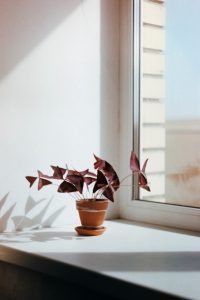
While most houseplants can be scorched by intense sunlight, some prefer full sun. Houseplants that thrive in full sunlight include cacti and some succulents. Such plants are native to desert or semi-arid regions where the sunlight is intense.
You can occasionally place your full-sun houseplants outside to enjoy some sunlight. Some houseplants that prefer full sunlight include:
- Dracaena plant
- Aloe Vera plant
- Cacti plants
- Jade plant
- Yucca plant
- Sago Palm plant
Bright indirect light
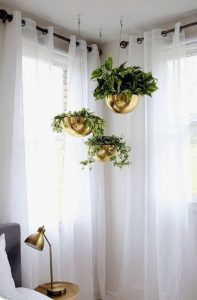
Some houseplants require filtered bright sunlight to thrive. Such plants will scorch when exposed to bright sunlight for too long. You can use curtain sheers to shield your houseplant from direct intense sunlight.
Alternatively, you can place your plant several feet away from a window that receives bright sunlight. Below are some houseplants that thrive in bright indirect sunlight.
- Calathea plant
- English Ivy plant
- Philodendron
- Fiddle Leaf Fig
- Alocasia
Medium indirect light
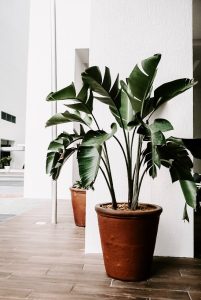
Medium indirect sunlight is favorable for some houseplants that can’t tolerate bright sunlight. Such houseplants thrive in partial shade conditions. If your houseplant requires medium indirect light, you can protect it from the hot afternoon glare by placing it several feet away from a window that receives bright sunlight. Some of the indoor plants that prefer medium sunlight include:
- Anthurium plant
- Maranta Prayer plant
- Ferns
- Snake plants
- Peace Lily plant
Low light
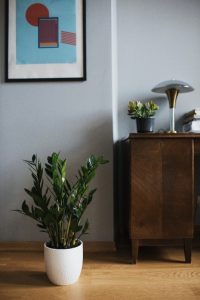
Low-light houseplants can survive in full-shade conditions. You can search for ‘houseplants low light online and purchase a suitable plant for your home. Some very low-light houseplants can even survive in a room without windows.
The best houseplants for low light are beginner-friendly and require minimal attention to thrive. Houseplants for low light are sustainable and provide a long service life with proper care and maintenance. Some of the best low-light houseplants you can grow indoors include:
- Cast Iron plant
- Snake plant
- Pothos plant
- Ferns
- Spider plant
- ZZ plant
- English Ivy plant
- Parlor Palm plant
Artificial light
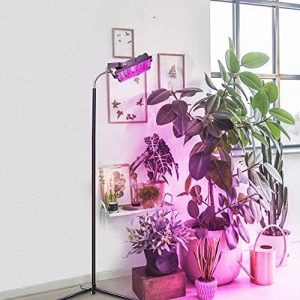
Sometimes, the lighting conditions indoors might not be suitable for your houseplants. Your home probably does not receive adequate lighting but you want to grow houseplants. Alternatively, during seasons like winter, the lighting might not be sufficient.
In this case, you can use grow lights for houseplants. Grow lights are specifically designed to produce the ideal light intensity your plant requires to thrive. You can choose a suitable grow light for houseplants to promote healthy plant growth. Some houseplants that can benefit from grow lights include:
- African Violets
- Succulents
- Orchids
- Philodendrons
- Dracaenas
Can I use a regular light bulb as a grow light?
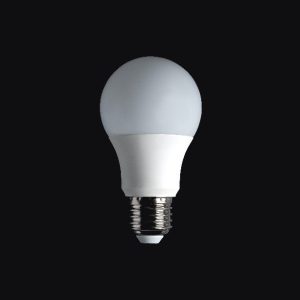
Yes, you can use several types of regular bulbs as grow lights. However, a regular bulb does not produce the ideal light intensity for the healthy growth of your plant. The ideal lights to use would be LED lights specifically designed to produce the right light spectrum your plant needs to thrive.
Light requirements for houseplants: Choosing the right spot for your plant
Different locations in your home receive varying light intensities. You can select the right spot for your houseplant based on its lighting needs. The directions your windows face can help you determine the right location for your houseplant. Here are some of the windows you can consider.
South-facing windows
South-facing windows receive the brightest light. Your sun-loving plants would thrive near these windows. South-facing windows receive the most intense sunlight during the late morning hours and early afternoon hours. You can place houseplants like Dracaena, or Cacti near these windows for the best results.
East-facing windows
East-facing windows are ideal for bright to medium indirect sunlight houseplants that require moderate lighting to flourish. These windows receive bright sunlight in the early morning hours when the sun’s rays are not too intense and indirect sunlight in the afternoon hours. Some houseplants that would thrive near east-facing windows include Calathea, Philodendron, Maranta, etc.
West-facing windows
Houseplants that need bright indirect or direct sunlight can thrive near west-facing windows. These windows receive bright indirect sunlight in the early morning to early afternoon hours. During the late afternoon to evening hours, west-facing windows receive bright direct sunlight.
The direct afternoon sunlight might scorch some houseplants and you should consider using shields to protect your plant. Several houseplants that can flourish near west-facing windows include Yucca, Jade, Alocasia, and others.
North-facing windows
North-facing windows receive the least light indoors. These windows receive about 1-2 hours of indirect sunlight during the morning hours and late afternoon hours. Low-light houseplants can survive near North-facing windows.
Houseplants that require plenty of light might not thrive near these windows. The best low-light houseplants that can thrive near north-facing windows include Ferns, Snake plants, ZZ plants, Cast Iron plants, and others.
How to shield houseplants from direct sunlight
Bright direct sunlight might damage some houseplants. If your houseplant’s leaves begin to fade or bleach, your plant is probably getting too much sunlight. Below is how you can protect your houseplants from direct sunlight.
Use window films
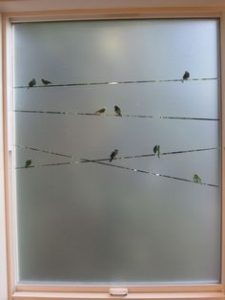
Plants near south-facing windows can be easily scorched. You can protect your sensitive houseplants from direct sunlight rays using window films.
Use curtain sheers

Curtain sheers are light curtains that block harsh sunlight rays from scorching your houseplants. You can use curtain sheers to protect your houseplants from the harsh afternoon sunlight rays.
Change the location
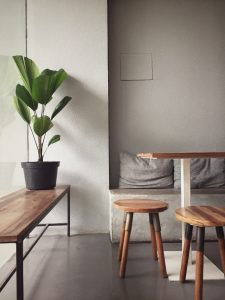
If your houseplant is getting too much light, you can move it to a location with less intense sunlight. For instance, you can move your plant from a location near a south-facing window to a spot near an east-facing window.
Signs that your houseplant is not getting enough light
A houseplant that is getting insufficient lighting will let you know by showing several signs. If you suspect that your houseplant is not getting enough light, you can look out for the following signs.
Leggy growth
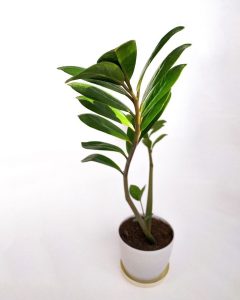
Lack of enough lighting causes your houseplant to become long and stretchy. Your plant grows longer stems and branches in an attempt to reach for enough lighting. The distance between the stems and leaves becomes longer and your plant appears unattractive. Try to save your plant by moving it to a location with adequate lighting. If you don’t have access to natural lighting, you can use houseplant grow lights.
Smaller and fewer leaves
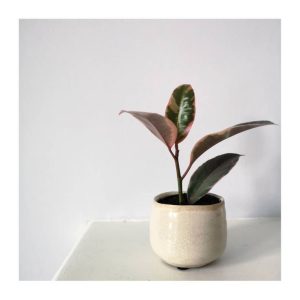
A plant that receives inadequate lighting develops smaller and fewer leaves. Your houseplant lacks sufficient energy to produce larger leaves. Try to find a location with enough lighting to sustain your plant. A houseplant in a well-lit location will develop more leaves and appear healthy.
Lopsided plant
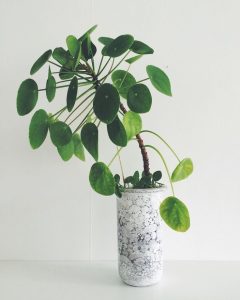
Houseplants that don’t receive enough light tend to lean towards the direction of light. Such plants twist and turn towards the light source. A lopsided plant appears unattractive and unhealthy. To avoid this, place your plant near a location with adequate lighting and rotate it to ensure maximum light absorption.
Stunted growth
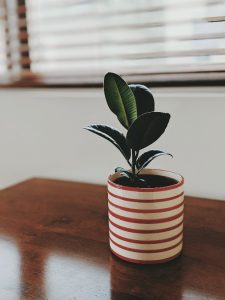
With inadequate lighting, your houseplant might grow more slowly or stop growing altogether. If your houseplant has not had any new growth for a while, it might not be getting enough light. Moving your plant to a location with plenty of light can restore growth.
Discolored leaves
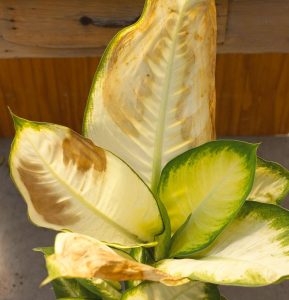
When placed in a location with inadequate lighting, the leaves of your houseplant might begin to discolor. The leaves might appear yellow or brown. However, discolored leaves might indicate other problems and you should first rule out these issues before moving your plant. Variegated houseplant varieties might lose their beautiful colors and turn solid green.
Soil that takes too long to dry out
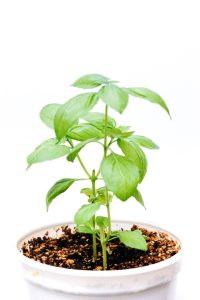
Several issues can cause your plant’s soil to dry out more slowly. Such issues include chilly weather, or over-watering. However, poor lighting can also make the soil dry out slower than usual. A plant near a bright light source dries quicker than one in shaded conditions. If you are confident that your plant doesn’t suffer from other issues, you can move it to a well-lit spot.
Houseplants flourish indoors in ideal lighting conditions. Some houseplants prefer full sun while others thrive in bright indirect light, or low light conditions. Other houseplants require artificial grow lights when the natural lighting conditions are not too ideal. A southern-facing window is suitable for houseplants that require bright light while east or west-facing windows are ideal for plants with moderate light requirements. If you require more assistance with your plant’s lighting, contact us today.
